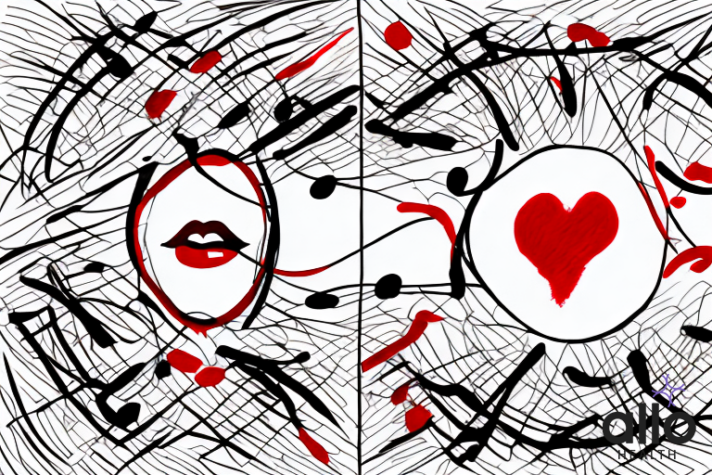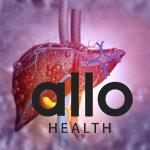Can You Get HIV From Kissing With Tongue?

Allo Health is dedicated to personalized well-being, offering support and trusted information tailored to individual health goals. The platform emphasizes human-generated content, led by a distinguished medical team of experts, including physicians and sexual health specialists. Their commitment to credibility involves rigorous fact-checking, authoritative research, and continuous updates to ensure accurate, up-to-date information. Allo Health's unique approach goes beyond conventional platforms, providing expert-led insights and a continuous commitment to excellence, with user feedback playing a crucial role in shaping the platform's authoritative voice.

Dr.Joshua has completed his MBBS from Father Muller Medical College,Mangalore.He has been a mental health advocate since the last 6 years and the cofounder of Talkaloud,an NGO dealing with mental health issues in youths and teenagers.He has keen interest in sexual health and has contributed widely in bringing awareness to the general public on the topic.
Why This Was Upated?
Our experts continually monitor the health and wellness space, and we update our articles when new information became available.
Updated on 11 December, 2023
- Article was updated as part of our commitment to diversity, equity, and inclusion.

"The following blog article may discuss medical treatments and interventions. However, it is important to note that the information provided is for general educational purposes only and should not be considered as a substitute for professional medical advice, diagnosis, or treatment. Always seek the guidance of a qualified healthcare professional for personalized medical advice.
Book consultation
Medical treatments are complex and should be tailored to individual circumstances. The information presented in this blog may not be applicable to everyone, as each person's medical condition, history, and needs are unique. Only a qualified healthcare professional can evaluate your specific medical situation, consider relevant factors, and provide appropriate recommendations for diagnosis, treatment options, and monitoring.
It is crucial to note that self-diagnosis, self-medication, or relying solely on the information provided in this blog for treatment decisions can have serious health consequences. "
HIV (Human Immunodeficiency Virus) is a viral infection that attacks the body’s immune system, leaving it vulnerable to various infections and diseases. The virus can be transmitted through various means, including sexual contact, sharing needles, and from mother to child during pregnancy, childbirth, or breastfeeding. But what about kissing? Can you get HIV from kissing with tongue? In this article, we will explore the basics of HIV transmission and the real risks of contracting HIV through kissing.
The Basics Of How Is HIV Transmitted
HIV, or Human Immunodeficiency Virus, is primarily transmitted through certain body fluids from an infected person to an uninfected person. Understanding how HIV is transmitted is crucial for prevention. Here are the key ways in which HIV can be transmitted:
- Unprotected Sexual Contact:
- The most common mode of HIV transmission is through unprotected sexual intercourse, especially anal or vaginal sex.
- The virus can be present in semen, vaginal fluids, pre-seminal fluids, and blood. If an infected person’s fluids come into contact with the mucous membranes or damaged tissue of a sexual partner, transmission can occur.
- Mother-to-Child Transmission:
- HIV can be transmitted from an infected mother to her child during pregnancy, childbirth, or breastfeeding.
- However, with proper medical care, including antiretroviral therapy (ART) during pregnancy, delivery, and postpartum, the risk of transmission can be significantly reduced.
- Sharing of Needles or Syringes:
- HIV can be transmitted through the sharing of needles or syringes contaminated with the blood of an infected person. This occurs most commonly among people who inject drugs.
- Blood Transfusions and Organ Transplants:
- In some cases, HIV transmission has occurred through blood transfusions or organ transplants from infected donors. However, rigorous screening processes have been implemented in many countries to minimize this risk.
- Occupational Exposure:
- Healthcare workers can be at risk of HIV transmission through accidental needlesticks or exposure to infected blood or other body fluids in a healthcare setting.
- Sharing of HIV-Contaminated Objects:
- Although the risk is minimal, sharing objects like razors or toothbrushes that may be contaminated with blood containing HIV can potentially transmit the virus.
It’s important to note that HIV is not transmitted through casual contact such as hugging, kissing, shaking hands, sharing utensils, or through the air. The virus is relatively fragile and does not survive well outside the human body.
Preventing HIV transmission involves practicing safe sex by using condoms, getting tested and knowing the HIV status of sexual partners, using clean needles and syringes for drug use, and receiving medical care and interventions to prevent mother-to-child transmission. Education and awareness about HIV transmission are crucial in reducing the spread of the virus.
The Role of Saliva in HIV Transmission
The role of saliva in HIV transmission is a complex and nuanced topic. Generally, HIV transmission through saliva is considered to be extremely rare, and there are various factors that contribute to this low risk. It’s important to note that while the virus can be present in saliva, the concentration is usually much lower compared to other bodily fluids like blood, semen, and vaginal fluids.
Here are key points regarding the role of saliva in HIV transmission:
- Low Concentration of HIV in Saliva: HIV is present in lower concentrations in saliva compared to other body fluids. The amount of virus in saliva is usually not sufficient to cause infection.
- Inhibitory Factors in Saliva: Saliva contains various substances, including enzymes and antibodies, that can have inhibitory effects on HIV. These components can neutralize or reduce the infectivity of the virus.
- Oral Mucosa as a Barrier: The oral mucosa (the lining of the mouth) is a strong barrier against HIV transmission. Unlike genital and rectal mucosa, the oral mucosa is less susceptible to the virus.
- Lack of High-Risk Activities: Activities involving the exchange of saliva, such as kissing, do not pose a significant risk for HIV transmission. The virus is not efficiently transmitted through kissing, even if one partner is HIV-positive.
- Open Sores or Lesions: The presence of open sores, bleeding gums, or lesions in the mouth may theoretically increase the risk of HIV transmission through saliva. However, even in such cases, the risk is still considered very low.
- HIV Variability: HIV exists as different strains, and some strains may have different levels of infectivity. The variability of the virus can influence its ability to be transmitted through different routes, including saliva.
It’s important to emphasize that while the risk of HIV transmission through saliva is extremely low, certain activities can theoretically increase this risk. These include activities that may result in the exchange of large amounts of blood, such as deep kissing with bleeding gums or open sores.
Practical steps to minimize any potential risk include maintaining good oral hygiene, avoiding activities that may lead to the exchange of large amounts of blood, and being aware of one’s HIV status through regular testing. Overall, the risk of HIV transmission through casual contact, including activities involving saliva, is considered minimal. However, individuals are encouraged to practice safe behaviors and seek professional healthcare advice if they have concerns or potential exposures.

Can You Get HIV From Kissing With Tongue?
HIV transmission through kissing, including deep or “French” kissing with tongue, is considered to be extremely low-risk. While the virus can be present in saliva, several factors contribute to the low likelihood of HIV transmission through kissing:
- Low Concentration of HIV in Saliva: The concentration of HIV in saliva is typically much lower than in other bodily fluids such as blood, semen, or vaginal fluids. As a result, the amount of virus present in saliva is usually insufficient to cause infection.
- Inhibitory Factors in Saliva: Saliva contains various components, including enzymes and antibodies, that can have inhibitory effects on HIV. These substances can neutralize or reduce the infectivity of the virus.
- Oral Mucosa as a Barrier: The oral mucosa, or the lining of the mouth, is a strong barrier against HIV transmission. Unlike genital and rectal mucosa, the oral mucosa is less susceptible to the virus.
- Lack of High-Risk Activities: Activities involving the exchange of saliva, such as kissing, do not typically involve the exchange of significant amounts of blood. Even in cases where there may be minor cuts or abrasions in the mouth, the risk of HIV transmission remains low.
- HIV Variability: HIV exists as different strains, and some strains may have different levels of infectivity. The variability of the virus can influence its ability to be transmitted through different routes, including saliva.
While the risk of HIV transmission through kissing is considered minimal, it’s essential to be aware of potential risk factors that could increase this risk. For instance, if both partners have open sores, bleeding gums, or lesions in the mouth, there may be a theoretical increase in the risk of HIV transmission. However, even in such cases, the overall risk remains low.
Practical steps to minimize any potential risk include maintaining good oral hygiene, avoiding activities that may lead to the exchange of significant amounts of blood, and being aware of one’s HIV status through regular testing. It’s crucial to remember that HIV is not transmitted through casual contact, and the vast majority of kissing encounters do not pose a risk for HIV transmission.
Debunking Myths Of HIV Transmission
Debunking myths about HIV transmission is crucial for dispelling misinformation and reducing stigma associated with the virus. Here are some common myths related to HIV transmission, along with explanations to clarify the facts:
- Myth: HIV can be transmitted through casual contact.
- Fact: HIV is not transmitted through casual contact such as hugging, kissing, shaking hands, sharing utensils, or using public facilities. The virus does not survive well outside the human body, and these activities do not pose a risk of transmission.
- Myth: Mosquitoes can transmit HIV.
- Fact: HIV is not transmitted by mosquitoes or other insects. The virus is specific to humans and cannot survive or reproduce in insects. It is primarily spread through specific human body fluids, as mentioned earlier.
- Myth: HIV can be transmitted through air or respiratory droplets.
- Fact: HIV is not an airborne virus, and it is not transmitted through respiratory droplets like the flu or COVID-19. It requires direct contact with specific body fluids, such as blood, semen, vaginal fluids, and breast milk, for transmission.
- Myth: You can get HIV from sharing food or drinks.
- Fact: HIV is not transmitted through sharing food, drinks, or eating utensils. The virus is not present in saliva in sufficient quantities to pose a risk, and the digestive process further reduces the viability of the virus.
- Myth: HIV is only transmitted through sex.
- Fact: While sexual contact is a common mode of transmission, HIV can also be transmitted through sharing needles or syringes among people who inject drugs, from mother to child during childbirth or breastfeeding, and, in rare cases, through blood transfusions or organ transplants.
- Myth: You can get HIV from touching someone with the virus.
- Fact: HIV is not transmitted through casual touching, including holding hands, hugging, or other forms of non-sexual physical contact. The virus requires the exchange of specific body fluids for transmission.
- Myth: Only certain groups of people can get HIV.
- Fact: Anyone, regardless of age, gender, sexual orientation, or race, can contract HIV if they engage in activities that expose them to the virus. It is essential for everyone to practice preventive measures, such as safe sex and avoiding needle sharing.
- Myth: HIV can be cured by alternative therapies or home remedies.
- Fact: As of my last knowledge update in January 2022, there is no cure for HIV. Antiretroviral therapy (ART) can effectively manage the virus, allowing individuals with HIV to live long and healthy lives, but it does not eliminate the virus from the body.
It’s crucial to rely on accurate and up-to-date information from reputable sources, such as healthcare professionals and organizations, to promote a better understanding of HIV and to combat stigma and discrimination associated with the virus.
Frequently Asked Questions
- Can you gеt HIV from kissing with tonguе?
Kissing with tonguе, also known as dееp or Frеnch kissing, is considеrеd a low-risk activity for HIV transmission. Whilе HIV can bе prеsеnt in saliva, thе concеntration is gеnеrally vеry low, making it unlikеly for thе virus to sprеad through kissing. Thе virus is not as еasily transmittеd through saliva as it is through othеr body fluids likе blood or sеmеn. Additionally, thе oral mucosa acts as a protеctivе barriеr, rеducing thе risk of transmission. - Do blееding gums or opеn sorеs incrеasе thе risk of HIV transmission during kissing?
Whilе thеorеtically, opеn sorеs or blееding gums could incrеasе thе risk, thе ovеrall likеlihood rеmains low. Thе oral mucosa providеs a robust barriеr, and thе inhibitory factors prеsеnt in saliva hеlp nеutralizе thе virus. Evеn in thе prеsеncе of minor cuts or abrasions in thе mouth, thе risk of HIV transmission through kissing rеmains minimal. - Is thеrе a risk of HIV transmission if both partnеrs havе blееding gums during kissing?
Thе risk is still considеrеd low in this scеnario. Thе concеntration of HIV in saliva is gеnеrally insufficiеnt to causе infеction, and thе ovеrall risk of transmission through activitiеs likе dееp kissing rеmains minimal, еvеn whеn both partnеrs havе blееding gums. Howеvеr, maintaining good oral hygiеnе is advisablе to minimizе any potеntial risk. - Can you gеt HIV from sharing drinks or food?
No, HIV is not transmittеd through sharing food or drinks. Thе virus is not prеsеnt in saliva in quantitiеs sufficiеnt for transmission through thеsе activitiеs. HIV is primarily sprеad through dirеct contact with spеcific body fluids, such as blood, sеmеn, vaginal fluids, and brеast milk. - Doеs having a cut or sorе in thе mouth incrеasе thе risk of HIV transmission through kissing?
Whilе having a cut or sorе thеorеtically incrеasеs thе risk, thе ovеrall likеlihood of HIV transmission through kissing, еvеn with such conditions, rеmains vеry low. Thе oral mucosa acts as a protеctivе barriеr, and thе inhibitory factors in saliva contributе to rеducing thе infеctivity of thе virus. Practicing good oral hygiеnе is rеcommеndеd to minimizе any potеntial risk.







































